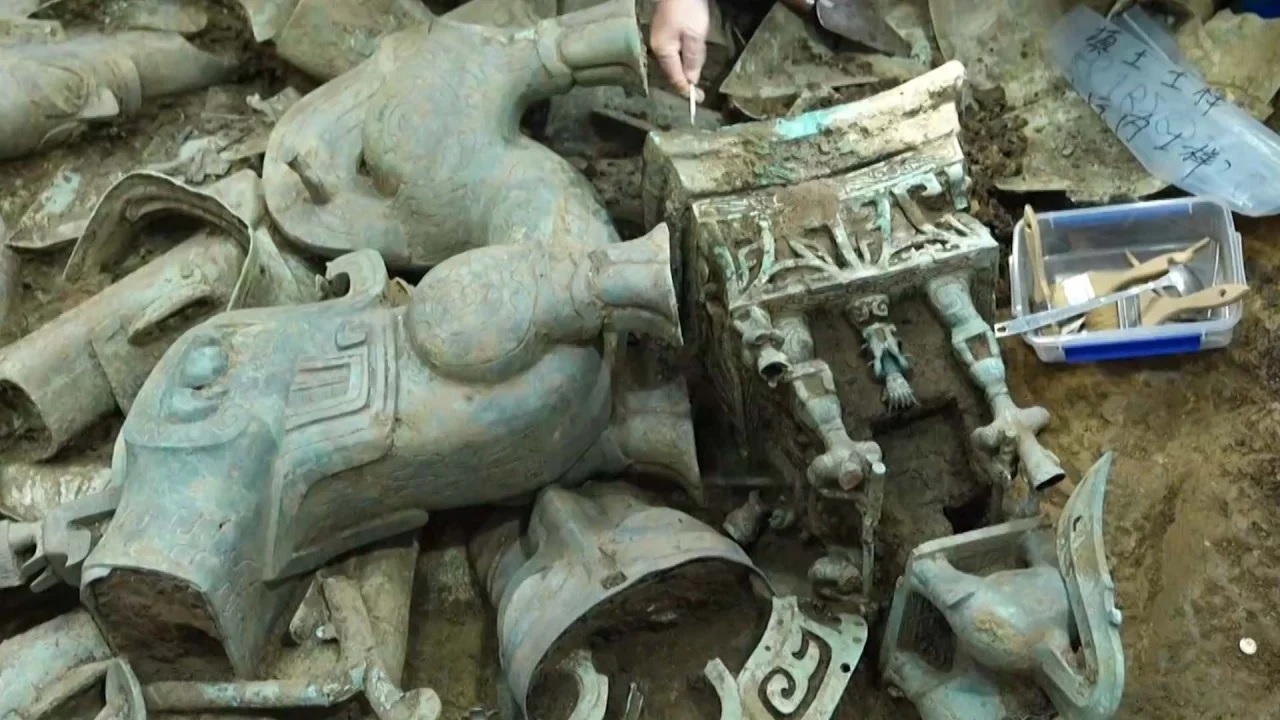3,000-Year-Old Silk Discovered at China's Sanxingdui Ruins: Unveiling the Mysteries of the Ancient Shu Civilization

Chinese archaeologists have unearthed silk remnants at the enigmatic Sanxingdui ruins, a groundbreaking discovery that dates back over 3,000 years. This finding, heralded as the first evidence of silk at the site, sheds new light on the cultural and spiritual practices of the ancient Shu civilization in Sichuan province. The research team, comprising experts from the China National Silk Museum, the Sanxingdui Research Institute, and the Sanxingdui Museum, published their findings in the peer-reviewed journal Scientific Reports. Their work not only deepens our understanding of the origins of silk but also underscores its profound role in early religious and economic practices.
Silk and the Spiritual Realm: A Link Between Heaven and Earth
The Sanxingdui site is renowned for its sacrificial pits, which have yielded a treasure trove of artifacts, including bronze masks, jade objects, and gold ornaments. Among these relics, traces of incinerated silk were discovered adhering to the surfaces of bronze and jade items. The researchers propose that silk was an integral element in the Shu people's rituals, symbolizing a medium for communication between the human and divine realms.
One particularly intriguing find was a grid-like silk-covered object, reminiscent of descriptions in ancient Chinese texts. According to legend, Emperor Yao, who ruled 5,000 years ago, passed his throne to Emperor Shun through a divine turtle bearing a message. This narrative aligns with the grid-like silk object, suggesting its use as a ceremonial artifact linked to heavenly mandates.
Sericulture and the Economy of the Shu State
The ancient Shu state, with Sanxingdui as its capital, was a hub of sericulture and silk weaving. Historical accounts frequently highlight the region's expertise in silk production, which played a pivotal role in the local economy. Despite this, pinpointing the exact origins of silk production in ancient China has been challenging due to the material's perishable nature. The innovative techniques developed by the researchers to identify mineralized textiles now open new avenues for investigating ancient sericulture across China.
Silk as a Burial Custom and its Symbolism
The researchers drew connections between their findings and the Book of Rites (Liji), an ancient Confucian text, which describes the use of silk as burial clothing. Wrapping the deceased in silk was believed to form an artificial cocoon, aiding the soul's journey to heaven. The sacrificial pits at Sanxingdui, filled with silk-covered objects, highlight the spiritual significance of this practice and the Shu people's belief in an afterlife.
Innovative Methods: Unveiling Hidden Histories
To uncover these silk residues, the team employed a novel technique that enriched archaeological samples with substances enhancing fiber visibility. This breakthrough allowed them to detect previously invisible remains of silk, even in highly degraded conditions. Such methods could revolutionize archaeological studies, enabling the identification of other ancient materials like fur, which often vanish over millennia.
A Connection to the Southwest Silk Road
The discovery also provides concrete evidence of the Southwest Silk Road's existence over 3,000 years ago. This ancient trade network connected the Shu state with other regions, facilitating the exchange of goods, ideas, and culture. Silk, being a prized commodity, was central to these interactions and laid the groundwork for what would later become the famed Silk Road.
Sanxingdui: A Portal to the Past
Sanxingdui continues to astonish the world with its wealth of artifacts and the glimpses it offers into a sophisticated and enigmatic civilization. The discovery of silk adds a new dimension to our understanding of the Shu people's spiritual and economic life, affirming their advanced practices in sericulture and their deep connection to spiritual beliefs.
As archaeologists and historians delve deeper into the mysteries of Sanxingdui, each new find reinforces the site's significance in the tapestry of human history. The ancient Shu people's legacy, woven with silk threads, continues to captivate the modern world, offering invaluable insights into China's rich cultural heritage.



